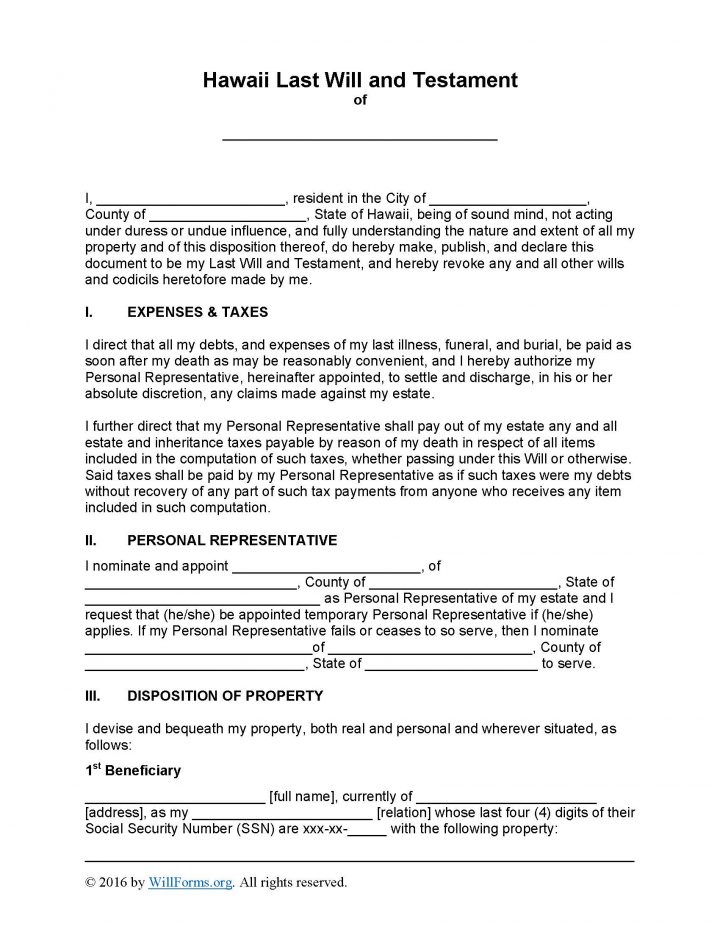
|
Hawaii Last Will and Testament Form |
The Hawaii last will and testament is a legal a document provided to allow a Declarant to create a document that will best describe a their specific instructions with regard to how the declarant would like their personal property, all financial accounts, real estate, stocks etc.,to be distributed among their selected beneficiaries after death. This document will assist in the guidance that the Declarant may require in the division of their property. As well, the document will allow the Testator to appoint a trusted executor who will distribute the property according to the instructions provided by the Declarant. Once the document has been completed signatures of the declarant, witnesses will be required so that the document will be legally effective. This document may be changed or revoked at any time.
Laws –Hawaii Revised Statutes 560-1, et seq
How to Write
Step 1 – Download the document – Begin by establishing the Declarant of the document
- Enter the full name of the declarant in the first line of the document – In the next paragraph, provide the following:
- The Declarant’s name
- City
- County
- Read titled section “Expenses and Taxes”
Step 2 – Personal Representative – The Declarant may then delegate powers to a trusted executor who shall oversee the distribution of the estate. Submit the following:
- The name of the appointed executor
- Address
- County
- State
If the initial executor is unable or unwilling to serve in the required capacity, the declarant may appoint an alternate. Enter the following:
- Alternate’s name
- Alternate’s complete address
- County
- State
Step 3 – Disposition of Property – The declarant must enter all of the required information needed regarding their beneficiaries. If there are more than three (3) beneficiaries, add the additional beneficiary’s information on a separate sheet. Attach the added sheet to the document:
- Enter the full name of each beneficiary
- Current complete address
- Relationship to the declarant
- The last four digits of the beneficiary’s Social Security Number (SSN) are required
- The declarant must read and agree to the next two paragraphs.
- If the declarant would like to provide additional information, they may do so by adding a sheet and attaching it to the document
Step 4 – Titled Sections and all Subsections- The Declarant should read all the following titles and subtitles before proceeding:
- Omissions
- Bond
- Discretionary Powers of Personal Representative (subsections A through K)
- Contesting Beneficiary
- Guardian Ad Litem Not Required
- Gender
- Assignment
- Governing Law
Step 5 – Binding Agreement – The Declarant must read the first paragraph. In the second paragraph, enter the following
- Enter the Declarant’s name
- Provide the date of exectution of the document in dd/m/yy format
- Declarant’s name
- Declarant’s printed name
- Date signature (in dd/m/yy format)
- Submit the Declarant’s name
Step 6 – Witness Signatures and Notary Public –All signatories must provide signatures before a notary public
Witnesses –
- Respective Witnesses, enter their signatures
- Enter each witnesses complete and current addresses
Testamentary Affidavit –
- A notary must acknowledge this document. All parties must be present to sign this document, in the presence of one another
- The notary will enter the names of the signatories
- Enter the signature of the Declarant
- Submit the signatures of the witnesses

